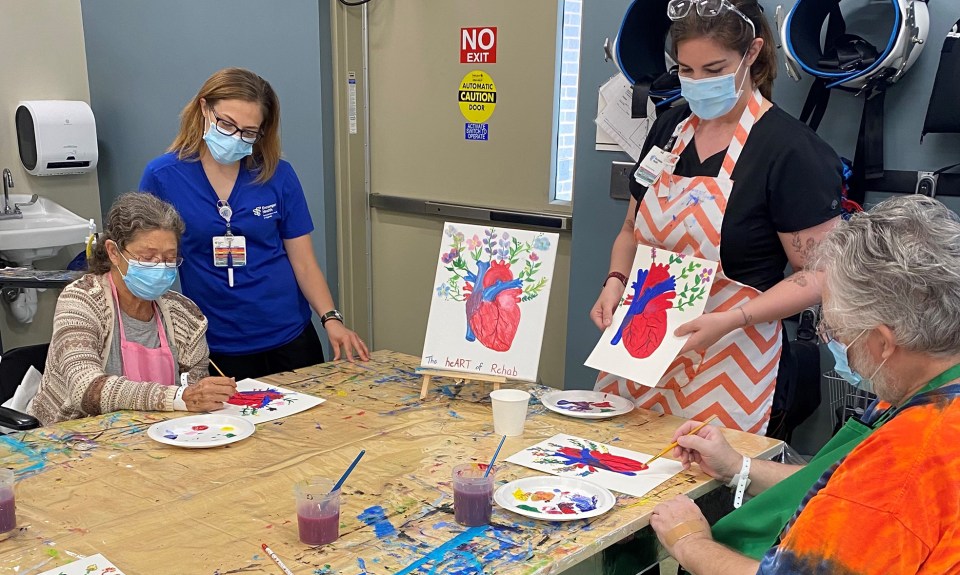Lara Stevens started painting on commission when she was just 8 years old. Her interest in telling stories through art lasted into adulthood, where she pursued part-time work as a freelancer of oil paintings, murals and more.
Now a physical therapy assistant (PTA) at Encompass Health Rehabilitation Hospital of Cypress, Lara has found that her painting ability translates to the clinical setting in an unexpected way: as a therapy exercise for patients recovering from stroke, brain injury and other debilitating illnesses or injuries.
Every Friday at Encompass Health Rehabilitation Hospital of Cypress in Texas, a group art class convenes. For one hour, patients can work on various aspects of their rehabilitation by following along as Lara and her colleague, occupational therapy assistant Melissa Kaehler, give step-by-step instructions for replicating paintings that Lara has created. She believes this exercise is more enjoyable for the patient than some more traditional forms of muscle training, such as practicing handwriting. From the patients’ canvases jump sunsets, beach scenes, landscapes and more.
What Are The Benefits of Painting, From a Therapy Perspective?
- Fine motors skills: Focusing on holding the paintbrush steadily, dipping the brush into the paint and carefully applying paint to the canvas challenges the patient to control their muscle movements. Every action must be intentional.
- Mental cognition: A step-by-step instructional style means each patient must concentrate on the verbal directions being given and then imitate the action of the instructor.
- Balance: The action of adjusting your workspace, standing up to obtain new tools and walking to and from the sink to rinse brushes is an exercise in balance.
- Stress relief: Many patients find painting to be a relaxing activity that allows space for error, distracts the mind and creates a byproduct that illustrates their progress.
“We consider it therapy for the soul and not just the body,” Lara said.
While in the hospital, patients’ artwork is displayed in their room as a reminder of their accomplishments. Upon discharge, they are encouraged to take their paintings home to show their family members just how far they progressed during rehabilitation. Leaving a lasting mark on the hospital, patients also paint colorful designs on small rocks that are then displayed in the hospital’s outdoor courtyard.
“Seeing the artwork they have done, they feel so proud,” said Director of Therapy Operations Susha Thomas. “Most patients start off thinking they could never do a painting or even a design on a rock—that it would be too hard or they would not be good at it. But they end up doing very well with the right encouragement. It’s really about positive reinforcement.”
The content of this site is for informational purposes only and should not be taken as professional medical advice. Always seek the advice of your physician or other qualified healthcare provider with any questions you may have regarding any medical conditions or treatments.



